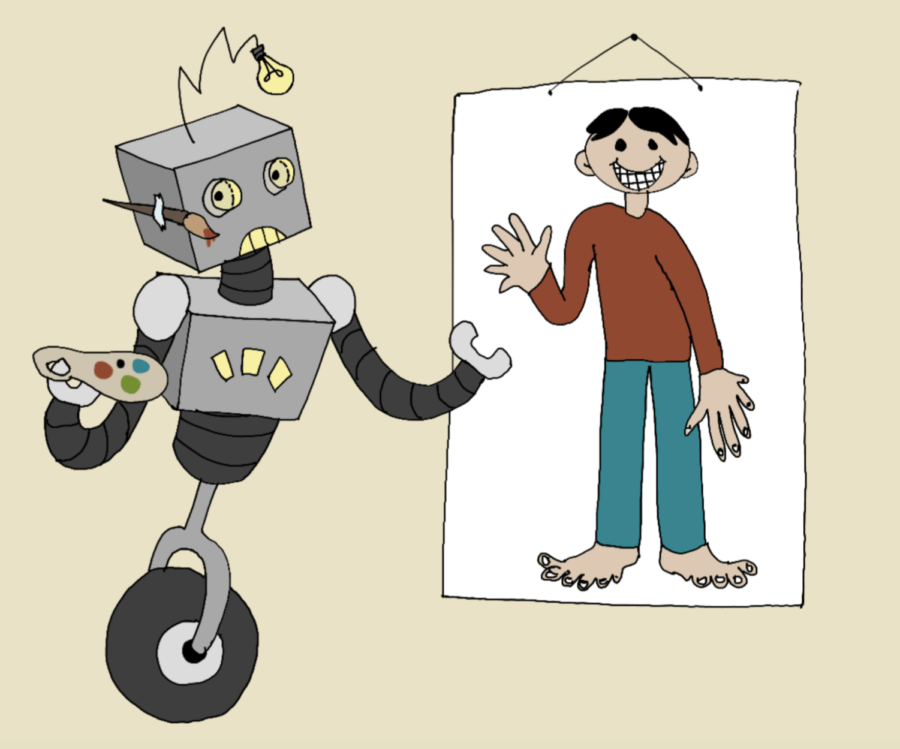Does Artificial Intelligence Have a Place in the Art World?
February 3, 2023
In 2022, Jason Allen won first prize in the Colorado State Fair with his artificial-intelligence-generated piece titled “Théatre D’opéra Spatial.” Soon after this victory, Allen and the State Fair received intense backlash directed at the validity of his work due to his use of AI. While some viewed the issue as simply the use of a new artistic tool, many saw it as a malicious violation of art’s fundamental morality, ethics, and integrity. With the introduction of artificial intelligence as a new and rapidly improving way to generate art, the artistic community has had to grapple with difficult questions considering its use. Is it ethical? Does it have a place in the art world? Is it even art? If not, then what factors dictate what art is?
Even at PDS, these are pressing questions that our artistic community works to answer. “[The use of AI in art] is a product of our culture and technology,” says Upper School Art Teacher and Gallery Director Gwen Shockey, an accomplished artist in her own right. Ms. Shockey sees the use of artificial intelligence in art as a continuation of a pattern that has repeatedly occurred for centuries. She argues that the transient nature of AI-generated art is very much aligned with modern-day culture. With the trends cycle moving so fast due to social media, this new and quickly generated work is a result of current events. Ms. Shockey claims that “everyone is making work in the only time they can…now” and sees this as a pattern throughout art history. Commonly, artists in the present and the past are heavily influenced by the world around them, which is reflected in their work.
Sophomore Maddy Cook, who takes PDS’s Advanced Fine Arts major, argues that the speed at which technology can generate artwork makes AI artwork so controversial. She contrasts AI work and art made by the human hand, saying, “AI artists aren’t spending their time and skill creating art as others do.” As a result, Cook believes that the time and effort put into art makes it unique; however, the use of AI in artwork limits this essential element of the creative process. Cook claims that the creations aren’t art because artists must put in their own work and craft. Cook says: “…The story that comes with the process of making it is what makes it art.” As the technology to generate art doesn’t create such a “story,” she sees artwork generated by artificial intelligence as devoid of the same meaning that traditional art possesses.
The work of artists is continuously changing and is often a reaction to the world around them. AI introduces a more profound meaning than any classically generated work could produce about our modern day. Its use shows us that, as our culture and world change, so does our relationship with art. Moreover, it communicates how flexible our definition of art is, where skill and craft can be interpreted through a computer screen. The use of artificial intelligence to generate art is not just ethical but is also an accurate representation of what art is: a visual and abstract expression of how our surroundings impact us.








